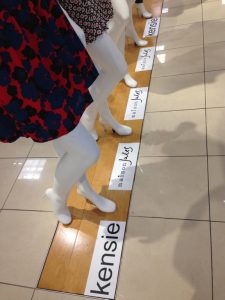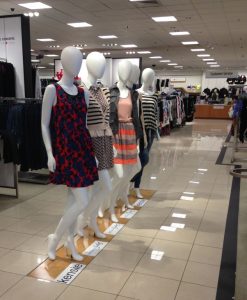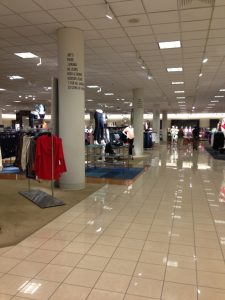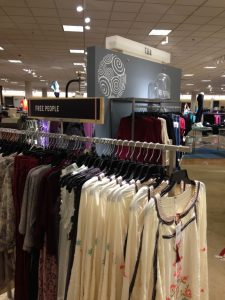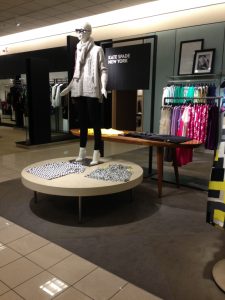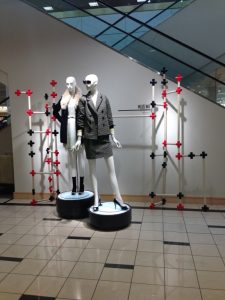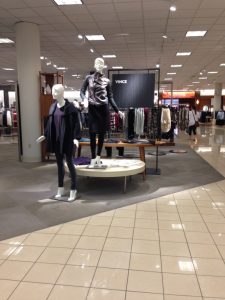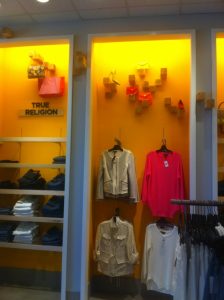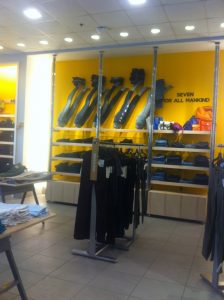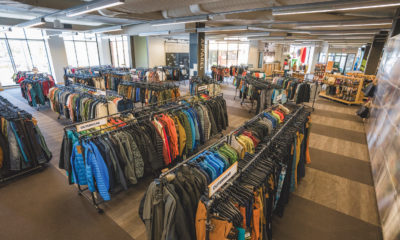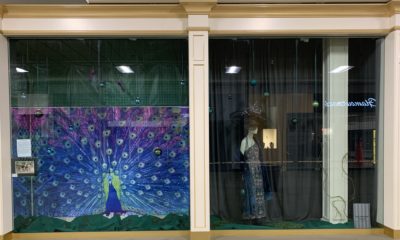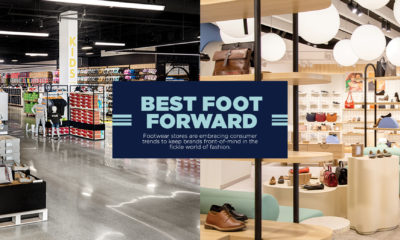Do you love my new Gucci’s?
I overheard someone ask this the other day while shopping with a friend. In response, a salesperson at the sunglasses counter pulled out a pair of shades and exclaimed, “These are the new Fendis!”
Since when has a pair of sunglasses ceased to be sunglasses? When have shoes moved from a noun to a proper noun? In this day and age it’s no longer about the actual name (shoe, handbag, belt, jeans) but about the brand name. We know people can clearly see what they are but they don’t know who they’re made by. In some cases, the brand name has become more important than the brand itself.
Fashion houses spend big bucks on names, creating perfect looks from runway to retail. Rag n Bone, Tory Burch, Vince and Kate Spade provide retailers with ‘look books’ to go along with their collection, leaving no room for styling misinterpretation. They remain in control of their image and ensure what the customer sees is what they want them to see.
Vince, for example, will not allow any accessories, shoes or handbags to be merchandised with its products unless it’s by Vince. Reps of these brands, on occasion, have been known to pop in stores unannounced to ensure look book styling standards are being maintained. It’s that serious.
Consumers are now shopping by brand as well. They feel confident in a trusted brand and expect that brand to anticipate their wants and desires. Head-to-toe brand looks are effortless and easier than mixing and matching for most, and many consumers have loyal brand integrity. Stores are noting brand importance and shopping behavior, and are now merchandising spaces by brands customers covet and love.
Advertisement
Brand recognition is the resulting trend in visual merchandising that just a few years ago was not on anyone’s immediate radar. Now retailers such as Bloomingdales in Santa Monica, Nordstroms in Columbus and Neiman Marcus in Dallas are allocating retail space to pure brand statements. And this trend transcends budget limitations. I have seen everything from full-on commitments in architectural shop-in-shops at the Santa Monica Bloomingdale’s; to freestanding “designer walls” at Neiman Marcus; to the simplest strategy of fixture or color-blocking within a section of a store at smaller boutiques.
As a retailer, how do you hone in on this trend of shopping by brand and merchandising to call out products with pure brand statements? Here are a few tips:
• Know your best sellers.
• Allocate a prime “A” location for the brand to temporarily live. Create a strong and compelling statement.
• Call out brands with signage.
Advertisement
• Have a single brand or product encompass an entire fixture or collection of fixtures. (This becomes your “brand boutique” in a way.)
• Look up the brand or designer’s retail store, website, fashion show or ‘look book’ to style mannequins as closely as possible to brand-specific looks.
• Do not cross merchandise or add “similar feeling” props. (Unless directed by the brand’s directive or a visual merchandising specialist)
• Keep it simple; let the brand speak for itself.
Our social media culture and younger and less “retailer-loyal” generations — not to mention celebrities and the new cadre of fashion bloggers — constantly reinforce the must-have status. Whether it’s a picture of a girl’s new shoes posted to Instagram or a celebrity on the red carpet at the summer’s hottest premiere, brands are the most frequent thing being mentioned, hashtagged and tweeted. I don’t see this changing anytime soon as customers make the hunt for brands the focus of their shopping trips. Retailers should let them know that they can find the ‘who,’ not the ‘what’ here…or over there. Like it or not – personal expression has been monopolized by brands. Merchandise accordingly. #Brands
Advertisement
Faith Bartrug of FBD Studios (Columbus, Ohio) has more than a decade of experience in transforming national brands. Her background includes brand strategy, environmental design and visual merchandising, and she has been able to practice what she preaches with leading design firms and clients such as Neiman Marcus, JCPenney and Mark Pi’s.


 Headlines1 week ago
Headlines1 week ago
 Photo Gallery22 hours ago
Photo Gallery22 hours ago
 Headlines2 weeks ago
Headlines2 weeks ago
 Headlines2 weeks ago
Headlines2 weeks ago
 Sector Spotlight1 week ago
Sector Spotlight1 week ago
 Headlines1 week ago
Headlines1 week ago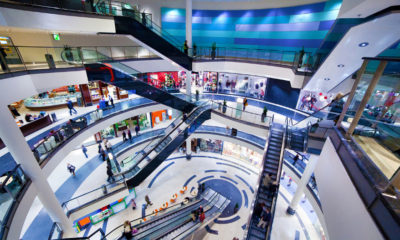
 Headlines2 weeks ago
Headlines2 weeks ago
 Headlines1 week ago
Headlines1 week ago

